 1998 Toyota Land Cruiser (J100) Dimensions, Size & Specs
1998 Toyota Land Cruiser (J100) Dimensions, Size & SpecsMeasurements of the 1998 Toyota Land Cruiser, engineered for optimal performance and comfort
| Dimensions | |
|---|---|
| Length: | 4890 mm192.5 in16.0 ft |
| Width: | 1940 mm76.4 in6.4 ft |
| Height: | 1860 mm73.2 in6.1 ft |
| Trunk Capacity: | 589 liter20.8 cu ft |
| Trunk Capacity (Max): | 2571 liter90.8 cu ft |
| Weight Specifications | |
| Curb Weight: | 2495-2650 kg5501-5842 lbs |
| Maximal permitted Weight: | 3260 kg7187 lbs |
| Tire Specifications | |
| Tire Sizes: |
|
The Toyota Land Cruiser J100 generation, produced from 1998 to 2002, marked a significant evolution in Toyota's legendary full-size SUV lineage. Designed to combine rugged off-road capability with comfort and modern features, this generation measured 4,890 mm (192.5 inches) in length, 1,940 mm (76.4 inches) in width, and stood 1,860 mm (73.2 inches) tall, providing a substantial presence both on and off the road. With a curb weight ranging between 2,495 and 2,650 kg (5,498 to 5,843 lbs), and a maximum weight capacity of up to 3,260 kg (7,188 lbs), the J100 was built robustly to handle challenging terrains and heavy loads alike. The SUV's luggage compartment offered 589 liters (20.8 cubic feet) of space with all seats in position, expanding massively to 2,571 liters (90.8 cubic feet) when rear seats were folded, highlighting its versatility for cargo and adventure. Tire options commonly included rugged sizes such as 275/70 R16 and 275/65 R17, optimizing traction and off-road performance. The J100 Land Cruiser deftly balanced substantial size with Toyota’s renowned reliability, making it an iconic choice for those needing a durable, spacious SUV capable of towing, off-road excursions, and daily driving comfort.
Discover the standout features that make the 1998 Toyota Land Cruiser a leader in its class
Have a question? Please check our knowledgebase first.
The Toyota Land Cruiser J100, produced between 1998 and 2002, has an overall length of 4890 mm (192.5 inches), a width of 1940 mm (76.4 inches), and a height of 1860 mm (73.2 inches). These dimensions reflect the vehicle’s robust and sizable SUV build, designed for both urban driving and off-road adventures. The substantial width and height contribute to the vehicle's commanding road presence while providing enough internal space for passengers and cargo.
The Toyota Land Cruiser J100 has a curb weight ranging between 2495 kg to 2650 kg (approximately 5,498 to 5,842 pounds), depending on the specific trim and equipment. Its maximum permissible weight or Gross Vehicle Weight Rating (GVWR) is 3260 kg (7,188 pounds). This weight capacity ensures that the vehicle can safely carry passengers, cargo, and tow without compromising its rugged performance and safety.
The luggage capacity of the 1998-2002 Toyota Land Cruiser J100 is quite spacious, providing 589 liters (about 20.8 cubic feet) of cargo space behind the rear seats. When the rear seats are folded down, the cargo capacity dramatically expands to 2571 liters (approximately 90.8 cubic feet). This versatile luggage space makes it an excellent option for long road trips and transporting bulky items, while balancing passenger comfort.
A standard garage typically measures around 2400 mm (7 feet 10 inches) in width and at least 4800 mm (15 feet 9 inches) in length. The Toyota Land Cruiser J100, with its width of 1940 mm (76.4 inches) and length of 4890 mm (192.5 inches), fits within the width comfortably but its length slightly exceeds the usual garage length by about 90 mm (3.5 inches). While it may fit in most standard garages, clearance at the front or rear could be tight, especially if there are storage installations or garage objects reducing usable space.
With a width of 1940 mm (76.4 inches), the Toyota Land Cruiser J100 is wider than many midsize SUVs, which often range from 1800 to 1900 mm (70.9 to 74.8 inches). This extra width provides more interior space, stability, and off-road capability but can also make the vehicle less nimble in tight urban environments or narrower off-road tracks.
The Toyota Land Cruiser J100 commonly comes with tire sizes 275/70 R16 or 275/65 R17. These tires are relatively wide and tall, supporting a strong grip on various terrains. The size supports good ground clearance and traction in off-road conditions, enhancing the vehicle’s capability on rocky, muddy, or uneven surfaces while maintaining comfort on paved roads.
Compared to the previous J80 generation, the J100 represents a modest increase in overall size. The J100 is slightly longer and wider, improving interior space, comfort, and luggage capacity. It offers a more refined and modern design with enhanced technology and comfort features. The slight size increase also helps improve stability and road presence without sacrificing off-road capability, maintaining its legacy as a rugged yet luxurious SUV.
The Toyota Land Cruiser J100's dimensions place it in direct competition with other full-size SUVs like the Land Rover Discovery Series II and Nissan Patrol Y61 of the era. While the Land Cruiser J100 offers similar length and width, it tends to have a taller height for better ground clearance. Its cargo capacity with folded seats is competitive or superior, emphasizing utility and off-road versatility compared to somewhat more urban-focused competitors.
The Toyota Land Cruiser J100 weighs between 2495 kg and 2650 kg (5,498 to 5,842 lbs), which is generally on par or slightly lower than comparable SUVs like the Land Rover Discovery Series II and Jeep Grand Cherokee of the same period. This weight aids in providing durability and ruggedness while balancing fuel economy and drivability. Its weight reflects the robust construction needed for off-road performance and the luxury features incorporated.
With a height of 1860 mm (73.2 inches), the Toyota Land Cruiser J100 provides substantial ground clearance, essential for serious off-road use. This height allows the SUV to tackle rough terrain with minimal underbody contact and provides good visibility for the driver. The tall stance supports water fording and obstacle navigation, making it a capable choice for off-road enthusiasts and those needing a reliable vehicle for rugged conditions.
Discover similar sized cars.
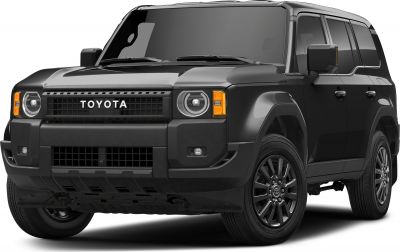
| Production: | 2021-present |
|---|---|
| Model Year: | 2021 |
| Length: | 4950-5115 mm194.9-201.4 in |
| Width: | 1980 mm78.0 in |
| Height: | 1890-1940 mm74.4-76.4 in |
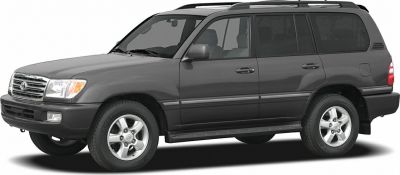
| Production: | 2002-2007 |
|---|---|
| Model Year: | 2002 |
| Length: | 4890 mm192.5 in |
| Width: | 1940 mm76.4 in |
| Height: | 1859-1880 mm73.2-74.0 in |
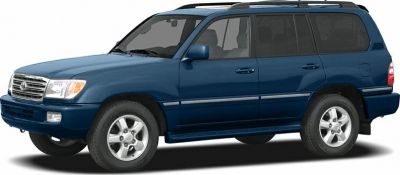
| Production: | 1998-2005 |
|---|---|
| Model Year: | 1998 |
| Length: | 4890 mm192.5 in |
| Width: | 1920-1940 mm75.6-76.4 in |
| Height: | 1850-1890 mm72.8-74.4 in |

| Production: | 2020-present |
|---|---|
| Model Year: | 2021 |
| Length: | 4956 mm195.1 in |
| Width: | 2220 mm87.4 in |
| Height: | 1888 mm74.3 in |
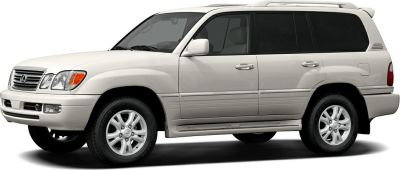
| Production: | 2005-2007 |
|---|---|
| Model Year: | 2006 |
| Length: | 4890 mm192.5 in |
| Width: | 1941 mm76.4 in |
| Height: | 1850 mm72.8 in |
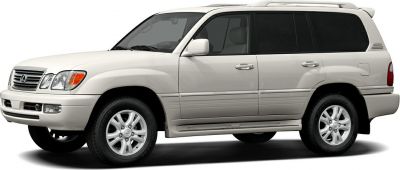
| Production: | 2002-2005 |
|---|---|
| Model Year: | 2003 |
| Length: | 4890 mm192.5 in |
| Width: | 1940 mm76.4 in |
| Height: | 1850 mm72.8 in |

| Production: | 2020-present |
|---|---|
| Model Year: | 2020 |
| Length: | 4835 mm190.4 in |
| Width: | 1900 mm74.8 in |
| Height: | 1785 mm70.3 in |

| Production: | 2020-present |
|---|---|
| Model Year: | 2020 |
| Length: | 4835 mm190.4 in |
| Width: | 1900 mm74.8 in |
| Height: | 1780 mm70.1 in |
